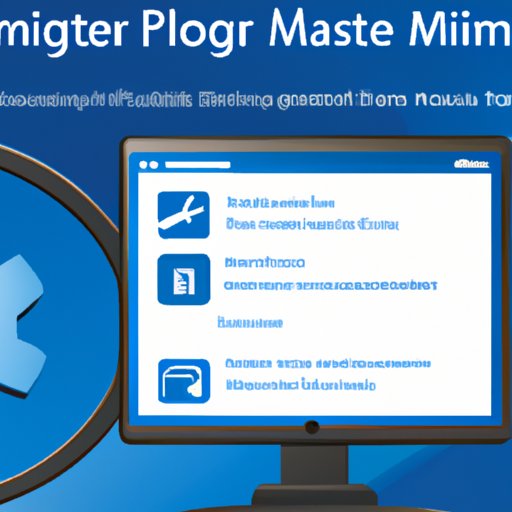Introduction
Windows Desktop Manager is a powerful tool that can help you manage multiple desktops on your computer. It allows you to create separate virtual desktops, which enables you to keep your applications and files organized. This makes it easier to find what you need, when you need it. In addition, it also provides a range of features for customizing your desktop experience and optimizing your workflow. Let’s take a closer look at what Windows Desktop Manager has to offer.
What is Windows Desktop Manager?
Windows Desktop Manager (WDM) is a built-in feature of the Windows operating system, starting from Windows 10. It allows you to create multiple virtual desktops, each with its own set of applications and windows. You can easily switch between these desktops by clicking on the taskbar icon or using keyboard shortcuts. This lets you keep different tasks, projects, and applications organized in separate places, making it easier to find and access them.
Overview of Benefits of Using a Windows Desktop Manager
Using Windows Desktop Manager can provide a range of benefits, including:
- Organization: WDM helps you organize your tasks and projects in separate desktops, making it easier to find what you need, when you need it.
- Customization: You can customize your desktop experience by creating custom wallpapers, themes, and layouts for each desktop.
- Productivity: WDM can help you optimize your workflow and increase your productivity by allowing you to quickly switch between tasks.
- Security: WDM can help protect your data and applications by isolating them in separate virtual desktops.
Setting Up Your Windows Desktop Manager
Once you understand the benefits of using Windows Desktop Manager, you may be wondering how to get started. Here is a step-by-step guide to setting up your Windows Desktop Manager:
- Open the Settings window by pressing the Windows key + I.
- Go to System > Multitasking.
- Under Virtual Desktops, click the “+” button to add a new desktop.
- Repeat this process to create additional desktops.
- Now you can drag windows and applications to the various desktops.
Tips and Tricks for Optimizing the Setup Process
Here are some helpful tips and tricks for optimizing the setup process:
- Create a unique name and wallpaper for each desktop to make them easier to identify.
- Use keyboard shortcuts to quickly switch between desktops. The default shortcut is Windows + Ctrl + Left/Right Arrow.
- If you have a large number of windows and applications open, you can use Task View to quickly switch between them without having to switch desktops.
- You can also use the Search bar to quickly find an application or file. Just type in the name of the item you are looking for and press Enter.
Troubleshooting Common Issues with Windows Desktop Manager
While Windows Desktop Manager is a useful tool, there may be times when you encounter issues. Here are some tips for troubleshooting common issues with Windows Desktop Manager:
Identifying Causes of Potential Issues
The first step in troubleshooting any issue is to identify the cause. Some potential causes of issues with Windows Desktop Manager include:
- Outdated drivers: If you have out-of-date drivers, they may conflict with Windows Desktop Manager.
- Corrupted files: Corrupted files can cause unexpected behavior with Windows Desktop Manager.
- Hardware conflicts: If you have multiple devices connected to your computer, they may be conflicting with each other.
Solutions for Common Problems
Once you have identified the cause of the issue, you can begin to troubleshoot. Here are some solutions for common problems with Windows Desktop Manager:
- Update your drivers: Make sure all of your drivers are up to date. You can do this by going to Device Manager and updating the drivers manually or using a driver update tool.
- Check for corrupted files: Check for corrupted files by running a scan with a disk repair utility.
- Disable hardware conflicts: If you have multiple devices connected to your computer, try disabling them one by one to see if this resolves the issue.
Conclusion
Windows Desktop Manager is a powerful tool that can help you keep your tasks and projects organized and optimized. It provides a range of features for customizing your desktop experience and increasing your productivity. To get started, follow the step-by-step guide provided earlier and use the tips and tricks for optimizing the setup process. If you encounter any issues, use the troubleshooting tips to identify the cause and resolve the problem.
In conclusion, Windows Desktop Manager is a great way to maximize your efficiency and keep your workflows organized. With its range of features and customization options, it can help you get the most out of your desktop experience.


